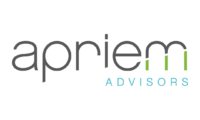
Charitable gifting is a powerful way to support causes you care about while also benefiting from the positive financial and tax implications associated with it. To get the most out of your charitable giving, it’s important to explore advanced strategies that can help you maximize your impact and minimize your tax burden. By leveraging these strategies, you can structure your charitable contributions in a way that best aligns with your financial objectives and philanthropic vision. Below are some of the advanced charitable gifting strategies that could potentially help you meet your long-term goals and leave a lasting legacy.
Donor Advised Funds (DAFs) are a popular and flexible option for charitable giving that allow you to make an irrevocable contribution to a sponsoring organization, which establishes a fund in your name. You’ll get immediate and full tax deductions at the year of the contribution while allowing you to grant to charities over time. DAFs can accept a wide range of assets, including cash, securities, and even real estate. Additionally, the assets in the fund can be invested and grow tax-free, further increasing your philanthropic impact.
Qualified Charitable Distributions (QCDs) are another effective way to give charitably, particularly for those who are 70½ years old or older and have an Individual Retirement Account (IRA). A QCD allows you to directly transfer up to $100,000 per year from your IRA to a qualified charity, tax-free. This transfer can satisfy your Required Minimum Distribution (RMD) without increasing your taxable income, which can be especially advantageous for those who are subject to higher tax brackets or who wish to minimize their exposure to Medicare surtaxes. It’s important to note that QCDs must be made directly to the 501(c)(3) charity and not to a DAF, private foundation, or supporting organization, as these entities are not eligible recipients.
Charitable Trusts provide another option for incorporating philanthropy into your financial plan, with various types offering unique benefits. A Charitable Remainder Trust (CRT) allows you to donate assets to the trust while retaining an income stream for yourself or designated beneficiaries for a specified period. At the end of the term, the remaining assets are distributed to the designated charity. This strategy can provide you with an immediate income tax deduction, reduce your taxable estate, and even help you diversify your investment portfolio. Alternatively, a Charitable Lead Trust (CLT) provides an income stream to a designated charity for a specified period, after which the remaining assets are distributed to your beneficiaries. This approach can help reduce gift and estate taxes, making it an attractive option for those seeking to pass on wealth to their heirs.
In conclusion, charitable gifting is not only a way to support the causes you care about but also a strategic component of your overall financial plan. By thoughtfully selecting the organizations and causes you contribute to and leveraging advanced strategies such as Donor Advised Funds, Qualified Charitable Distributions, and Charitable Trusts, you can maximize your impact and optimize your tax benefits. If you have questions or want to model charitable giving strategies like these into your financial plan, please reach out to your wealth manager.
Christopher Whitaker, CFP®, AIF®
Sr. Financial Advisor/Sr. Financial Planner
